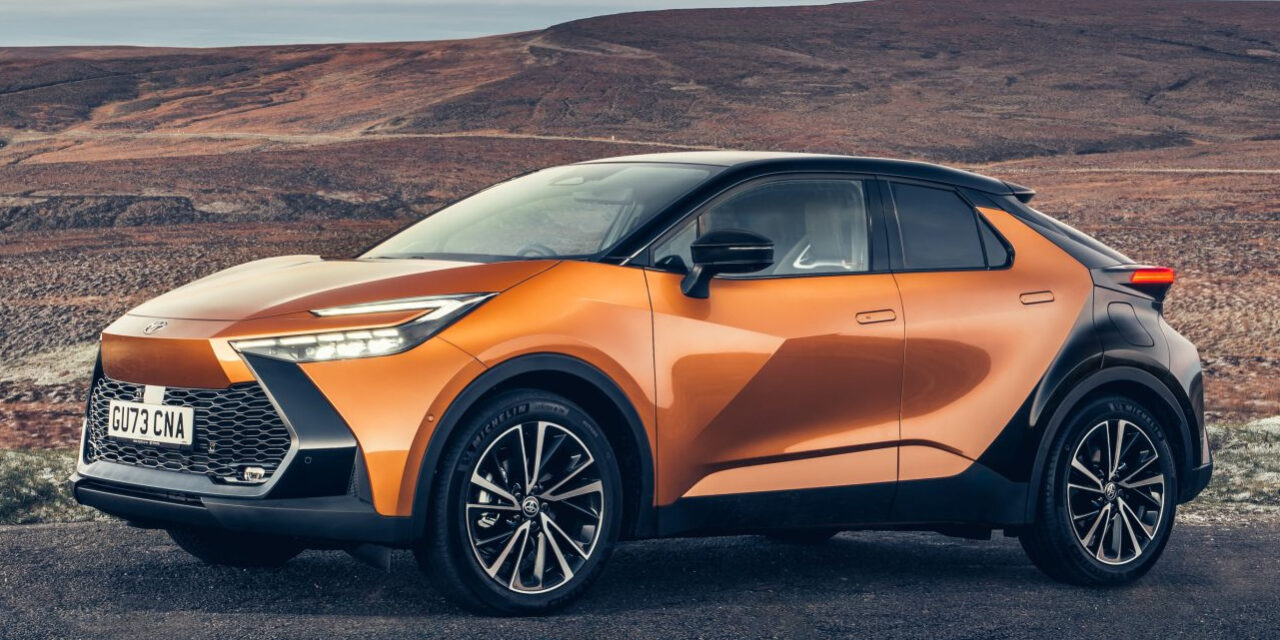Meet the new Toyota C-HR, a bobby dazzler if ever I saw one.
This is the car that had everyone talking when it was launched in 2017, its futuristic, razor sharp styling catching the imagination. The biggest shock was that it was a Toyota who had gone from dull to dazzling.
Six years on and the second model in the family tree is in the showrom. There was no need for major surgery, the designers got it right from the start but there has been some cosmetic work to the front with a striking headlight signature, and Tesla style pop out door handles. A smart touch on the tailgate is the model name integrated into the full width light bar.
No changes under the bonnet, 1.8 or 2-litre petrol hybrid engines, although a major new addition is a plug-in hybrid which will join the range in a few weeks.
C-HR is a genuine crossover, part hatchback, part SUV, sitting between cars like the slightly smaller Ford Puma and larger Nissan Qashqai or Kia Sportage. What makes it stand out is the bold body styling and its coupe look roofline.
Inside is also a bit special with slashes and angles breaking up what is often basic interior design in many rivals. Fixtures and fittings are high quality nudging the Toyota towards the premium end of the market.
A variety of cabin ambient lighting strips offer a choice of 64 colours and has a useful safety feature changing to red if there is a risk of opening a door to passing traffic or a cyclist. First time I have come come across that on a car.
As expected there has been a tech upgrade with excellent graphics in the 12.3in central screen which houses a mass of information, most of which you will not need, although the clarity for the on board navigation is great. Thankfully Toyota has stuck with physical switches for the heating.
The driver’s binnacle is also high tech and interchangeable and gets brownie points for a high quality head up display, something I would like to see on all cars.
An area where C-HR falls short of a five star rating is space. My son is nudging six feet and with him in the front legroom for the adult back seat passenger was tighter than some rivals.
The sharp styling I have been praising has one drawback. It is a bit claustrophobic in the back because there is not an awful lot of glass so we were glad of the full length glass roof, a £560 option lower down the range, which brought some much needed light into the car.
It is tinted and doesn’t need a sun shade because of infrared reducing coatings. The idea is to keep heat inside in the winter and prevent overdheating in a sunny summer. It also saves weight and increases headroom so it is well worth the money.
My test car was the GR Sport but don’t get too excited. This does not have the firecracker 257bhp engine from the rally bred GR Yaris, just some GR styling flourishes, although the sports front seats are very comfortable and supportive should you push the C-HR which has very tidy handling.
I did not manage to get close to the official combined economy figure but you can bank on 50+mpg most of the time.
Frankly 40 grand for the GR Sport is a bit too much to be paying for a car this size particularly when it does not have the engine to match the name. The entry 1.8 litre for £31,000 is a good buy if that is the top of your budget.
How good is C-HR? It looks fantastic, is great to drive, economical, with a full suite of safety features, and would make the shortlist in any car of the year award.
Fast facts
C-HR GR Sport
£40,645 (starts £31,290)
2-litre petrol hybrid; 193bhp
0-62mph 8.1secs; 112mph
57.6mpg combined
111g/km. 1st year tax £185
Insurance group 27
Boot: 364 litres










